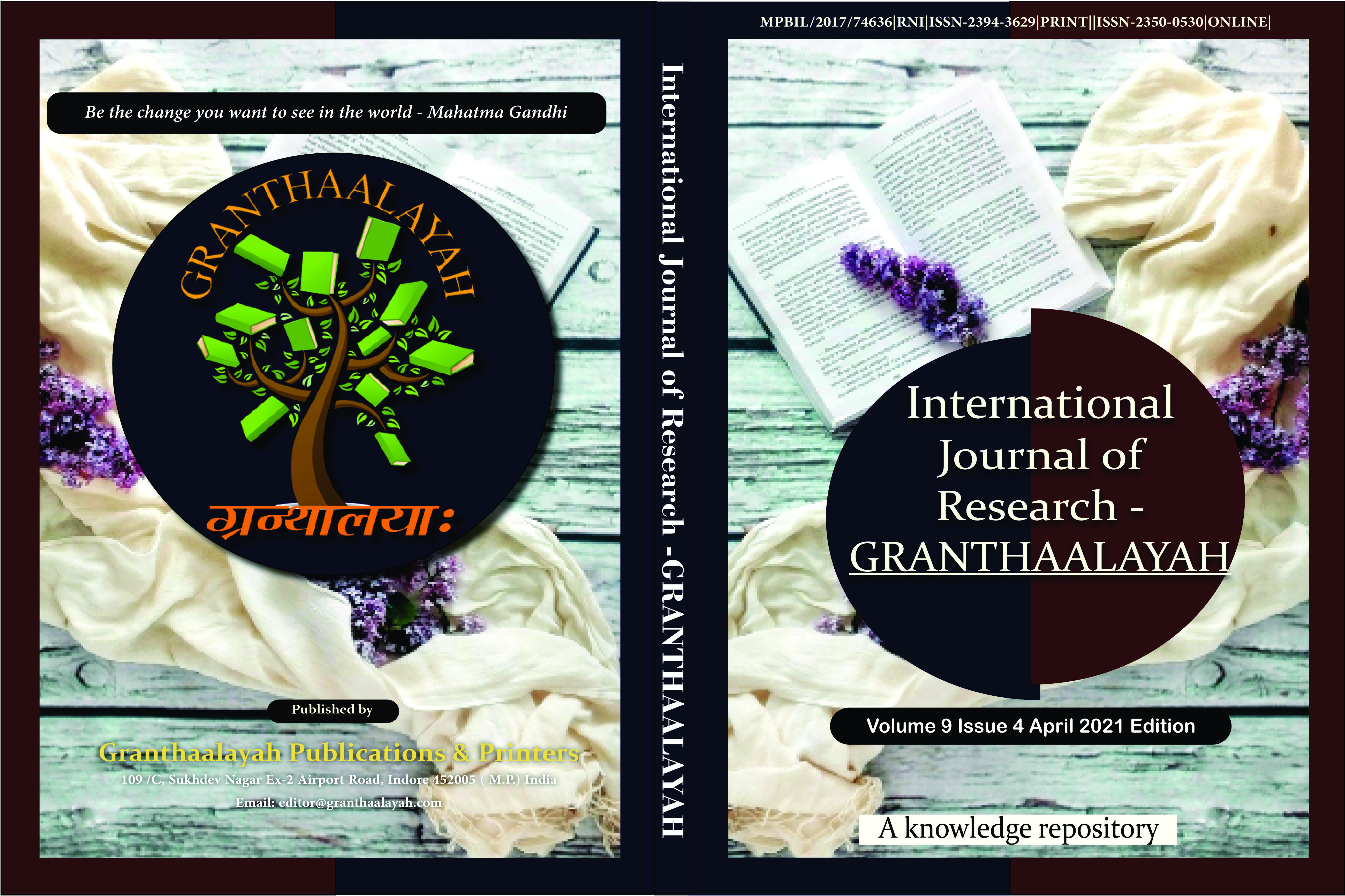FACTORS AFFECTING TO ORGANIC FOOD BUYING INTENTION
DOI:
https://doi.org/10.29121/granthaalayah.v9.i4.2021.3900Keywords:
Organic Food, Diseases, FarmersAbstract [English]
Organic food is one latest food cultures of Sri Lankan community due to the non-communicable diseases of the inorganic foods. After the green revolution and plantation culture of the country farmers used to use the pesticides, Insecticides, , Fungicides to manage the crops. After the green revolution, multinational companies who are based on the Monsanto concept started to distribute their chemicals under the faith of high yield. Today Sri Lanka is the country which has the most agriculture based chemical consumers in the world.
Downloads
References
Baker, S., Thompson, K. E., Engelken, J. & Huntley, K. (2004). Mapping the values driving organic food choice. European Journal of Marketing 38(8), 995–1012. Retrieved from https://dx.doi.org/10.1108/03090560410539131 10.1108/03090560410539131 DOI: https://doi.org/10.1108/03090560410539131
Batte, M. T., Hooker, N. H., Haab, T. C. & Beaverson, J. (2007). Putting their money where their mouths are: Consumer willingness to pay for multi-ingredient, processed organic food products. Food Policy 32(2), 145–159. Retrieved from https://dx.doi.org/10.1016/j.foodpol.2006.05.003 10.1016/j.foodpol.2006.05.003 DOI: https://doi.org/10.1016/j.foodpol.2006.05.003
Bourn, D. & Prescott, J. (2002). A Comparison Of The Nutritional Of The Nutritional Value, Sensory Qualities And Food Safety Of Organically And Conventionally Produced Foods. Critical Reviews In Food Science And Nutrition 42, 1–34. DOI: https://doi.org/10.1080/10408690290825439
Cicia, G., Giudice, D., Scarpa, T. & R. (2002). Utility Model Under Preference Heterogeneity And Choice Correlation From Rank-Orderings. British Food Journal 104(3), 213. DOI: https://doi.org/10.1108/00070700210425660
Davis, A. (1995). Who Buys Organic Food? A Profile Of The Purchasers Of Organic Food In N. Ireland. British Food Journal 97(10), 17–23. DOI: https://doi.org/10.1108/00070709510104303
Kapuge, K.D.L.R. (2016). Determinants of Organic Food Buying Behavior: Special Reference to Organic Food Purchase Intention of Sri Lankan Customers. Procedia Food Science 6(6), 303–308. Retrieved from https://dx.doi.org/10.1016/j.profoo.2016.02.060 10.1016/j.profoo.2016.02.060 DOI: https://doi.org/10.1016/j.profoo.2016.02.060
Lockie, S., Lyons, K., Lawrence, G. & Mummery, K. (2002). Eating 'Green': Motivations behind organic food consumption in Australia. Sociologia Ruralis 42(1), 23–40. Retrieved from https://dx.doi.org/10.1111/1467-9523.00200 10.1111/1467-9523.00200 DOI: https://doi.org/10.1111/1467-9523.00200
Magnusson, M. (2004). Consumer Perception Of Organic And Genetically Modified Foods. In Consumer Perception Of Organic And Genetically Modified Foods: Jealth And Environmental Considerations. Uppsala:
Naspetti, S. & Zanoli, R. (2006). Marketing Dynamics Within The Global Trading System. In Organic Food Quality And Safety Perception Throughout Europe, EAAE Seminar ‘Marketing Dynamics Within The Global Trading System: New Perspectives. Greece:
Torjusen, H., Lieblein, G., Wandel, M. & Francis, C. A. (2001). Food system orientation and quality perception among consumers and producers of organic food in Hedmark County, Norway. Food Quality and Preference 12(3), 207–216. Retrieved from https://dx.doi.org/10.1016/s0950-3293(00)00047-1 10.1016/s0950-3293(00)00047-1 DOI: https://doi.org/10.1016/S0950-3293(00)00047-1
Whitehead, P. & Nicholson, S. (2001). Niche Or Mainstream. In Organic Food: Niche Or Mainstream. IGD, Letchmore Heath Watford:
(2021). World Health Statistics (2015) Gho-Documents/World-Health-Statistic-Reports/World-Health. Retrieved from Https://Www.Who.Int/Docs/Default-Source/Gho-Documents/World-Health-Statistic-Reports/World-Health-Statistics-2015.Pdf
Published
How to Cite
Issue
Section
License
Copyright (c) 2021 K.G.N.W. Abeyrathna

This work is licensed under a Creative Commons Attribution 4.0 International License.
With the licence CC-BY, authors retain the copyright, allowing anyone to download, reuse, re-print, modify, distribute, and/or copy their contribution. The work must be properly attributed to its author.
It is not necessary to ask for further permission from the author or journal board.
This journal provides immediate open access to its content on the principle that making research freely available to the public supports a greater global exchange of knowledge.

























